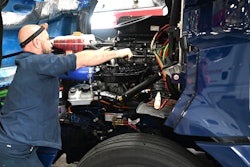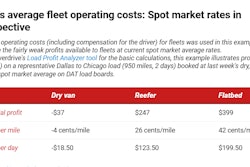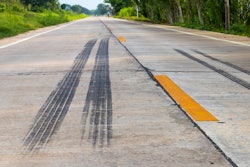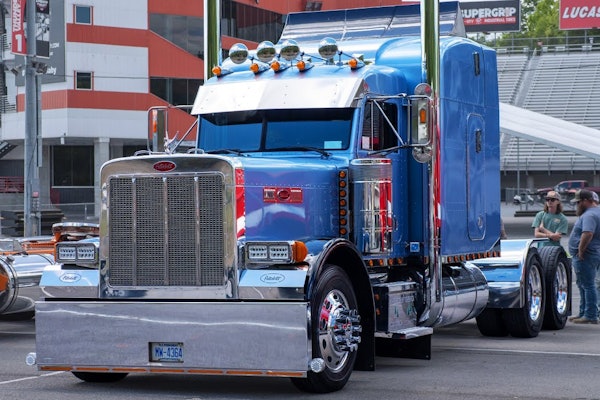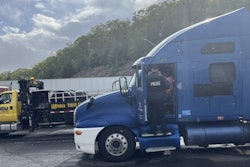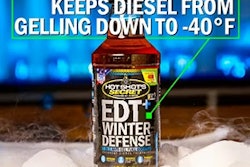The question in the title is a tricky one to answer, according to Overdrive colleague Lucas Deal, editor of our sister service-shop publication TPS. The answer varies depending on the light position and its design. Current Commercial Vehicle Safety Alliance operational policy for roadside inspections underscores the reality: "No violation exists for the number of burned-out diodes as long as visibility requirements for that specific lamp are met."
Some LED lamps, furthermore, feature just a handful of diodes; while others can have dozens. Additionally, as any working owner-operator knows and despite CVSA's harmonization efforts, no two vehicle inspectors approach inspections exactly the same way. A light that's operational for one inspector might be a certain failure for another. Lighting advice Deal emphasized in his recent dive into just how how and why otherwise durable LED lights fail, included:
- Spec and install lamps providing more than 100% illumination compliance when new -- that gives you a longer usage period before compliance questions rear their heads.
- LEDs might change color as they age -- color alterations will eventually progress to dimming and the need to replace.
- A single diode failing within a multi-diode light also is likely a precursor to more diode failures.
- When in doubt about a light's compliance, default to replacement. "Nobody can afford a ticket nowadays,” said one lighting expert.
Long-life LEDs have certainly changed the replacement market for truck and trailer lights. For truckers utilizing them, the risk of a light violation is reduced, given generally improved longevity and durability over many types of lamps. Yet they don't last forever.
Read the full TPS report via this link. Find further highlights below.

The reasons diodes fail
John Hoover, Truck-Lite vice president of aftermarket and fleet sales, told Deal he's “found that LED failures almost always stem from factors upstream of the diode itself.”
Collision impact. LED lamps are far less fragile than their incandescent brethren, but no light is impervious to physical damage. Optronics Vice President of Sales Dustin Smith called it “the No. 1 reason for failure” in LED lamps.
Some minor damage, such as a cracked housing, might leave the light fully operational but accelerate degradation and eventual failure. Other damage might include to welds or weakened adhesive bonds, too. Individual diodes subject to direct impact could fail while other diodes continue to function.
Moisture, corrosion over time. LED lamps designed and sold as waterproof or water-resistant are marketed with incredible life cycles. But Hoover said that's only so if they remain in peak operating condition. Once a lamp’s protective housing has been breached, it’s a matter of time before moisture enters the unit.
Sometimes not even directly. Dustin Smith mentioned moisture wicking through a compromised harness directly into a closed lamp. “If [moisture] gets into the rear of the lamp it’s going to go straight to the circuit board,” he told Deal. In such an instance, a lamp won’t fail immediately. Rather, corrosion sets in over time (amplified by electrical current), wearing down the wiring, circuit board and diodes at a varied pace depending on the amount of moisture present.
A Grote technical bulletin notes wires that are beginning to corrode “are not good conductors of electricity. As a result, lamps, especially ABS indicator or stop/turn/tail lamps, will flicker or stop working altogether, creating a dangerous and often illegal situation.”
If you're seeing flicker and/or dark spots, "it’s time for a swap,” Smith said.
[Related: Stay ahead of the inspectors with maintenance topics in Overdrive]
Improper voltage, electrical overstress. Both can wear down a lamp prematurely. Optronics’ Michael Whitman, director of product management, noted voltage-related failures are often found at the rear of a lamp near the printed circuit board (PCB), where excessive current enters the unit. LEDs are made to withstand intermittent voltage spikes and corresponding temperature increases in those areas, but perpetual and egregious abuse will still lead to failures. Sustained overvoltage could be the result of an alternator problem.
Excess heat, generally, whatever the source, can prematurely destroy an LED lamp. All of the failures above, furthermore, can increase heat within a unit, as can lamps “trapped in unvented enclosures or fitted with subpar heat sinks that let junction temperatures climb,” said Hoover. Rising temperatures also will increase current flow and generate even more heat in a process called thermal runaway, which Hoover cites as a common generator of diode failures.
What's been your experience with LEDs' failure, if any? Contact Overdrive editor Todd Dills at this email to share tips to keep diodes from going dark.
The Overdrive/ATBS coproduction of the Partners in Business playbook offers a wealth of maintenance advice in the Equipment and Maintenance section. PIB is a comprehensive trucking guide, a resource for owner-operators for now more than 20 years. The new guide offers insights into starting, growing, and (ultimately) finishing a trucking business. Now available in a mobile-friendly format, it covers everything from business planning to retirement strategies.



